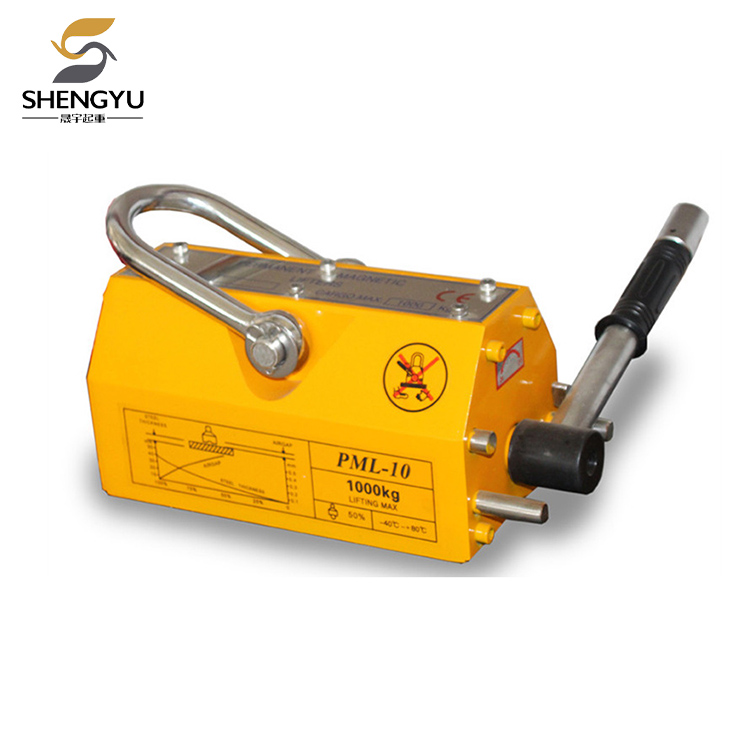If a magnetic lifter is being used again after a long period of inactivity, what tests should be performed to ensure safe lifting?
2025-10-15
If a factory-installed magnetic lifter has been unused for three to five months, or even six months, it should not be used immediately. This is dangerous and prone to accidents. We must conduct thorough inspections, and every step must be done carefully.
Observe the Appearance
Don't rush to power it on to test suction. First, walk around the magnetic lifter to check for deformation or cracks in the magnetic panel, and to see if the anti-rust coating has fallen off. If the panel is deformed, there will be gaps between the workpiece and the lifting force, which will directly reduce suction. If the coating has fallen off, it will easily rust, which will affect suction and damage the panel. Also, check the connections for cracks or looseness, and whether any screws are missing or stripped. Finally, check the cable sheath for tears and age, and whether the connectors are loose or oxidized. If the cable is damaged, leakage will occur and the power supply will be unstable. Any problems with the appearance must be repaired first.
Testing the Magnetic Suction
After the magnetic lifter's appearance is correct, test the suction force. We can find a standard-weight steel plate. First, clean the magnetic surface to remove any dust and rust. Then, attach the lifter to the plate and slightly lift it 10 to 20 cm off the ground. Hold for 30 seconds. Check whether the plate slides smoothly and whether the lifter seems to be struggling. If the plate doesn't budge, the suction is normal. If it slides or the lifter makes a buzzing sound, it's likely that the internal magnets are aging and should be repaired by the manufacturer. Don't try to make do with it yourself. Also, attach small pieces of steel plate to different locations on the magnetic panel to see if they hold. If some areas stick while others don't, there's a problem with the internal magnets and the lifter cannot be used. The workpiece will easily tilt and fall.

Check circuit stability
The magnetic lifter's circuit and control system must be checked to prevent malfunctions upon powering on. First, check to see if the indicator light is on after turning on the power switch. Test the "engage" and "release" control buttons to see if they engage smoothly, if there's any lag, or if there's a delay in engaging or releasing. For example, if it takes several seconds for the "engage" button to engage, this could indicate poor contact in the internal coil or an aging control system. Also, check if the emergency stop button immediately shuts off power when pressed; this is a safety measure and must be sensitive.
Test Operation
Attach the lift to the magnetic lifter and start it unloaded. Move the lift up and down, and rotate it, to see if it's stable and if there are any unusual noises. For example, if the motor makes a buzzing sound or if it's stuck while moving, this could indicate aging bearings or rusted or stuck mechanical parts. These components need to be disassembled, cleaned, and lubricated. Next, apply a small steel plate to the lifter. After engaging, press the release button to see if the plate drops smoothly and if there's any delay. If the release isn't timely, the workpiece won't be placed properly, and you'll need to force it, which can damage both the workpiece and the lifter. If the problem occurs during unloaded operation, do not lift heavy objects. First, disassemble the lifter, clean any dust or rust, and lubricate it. Repair the problem and try again.
Check the Safety Devices
The safety devices on a magnetic lifter are the "last line of defense" against accidents. We can try to lift a workpiece that is 10% heavier than its rated weight. For example, if it's rated for 5 tons, try to lift a 5.5-ton one. Under normal circumstances, the overload protection will trigger, causing the device to alarm and prevent the lift from being lifted. If the device can still lift without an alarm, it indicates a faulty protection. Repair it before using it again, as overloading can damage the device. If the power suddenly goes out while the lift is lifting a workpiece, see if the lifter will immediately release the workpiece. Standard electric lifts have a power-off magnetic retention feature, which maintains suction for a short period after a power outage, making it easier to lower the workpiece to a safe location.




